anesthesia machine
1/20
There's no tags or description
Looks like no tags are added yet.
Name | Mastery | Learn | Test | Matching | Spaced |
|---|
No study sessions yet.
21 Terms
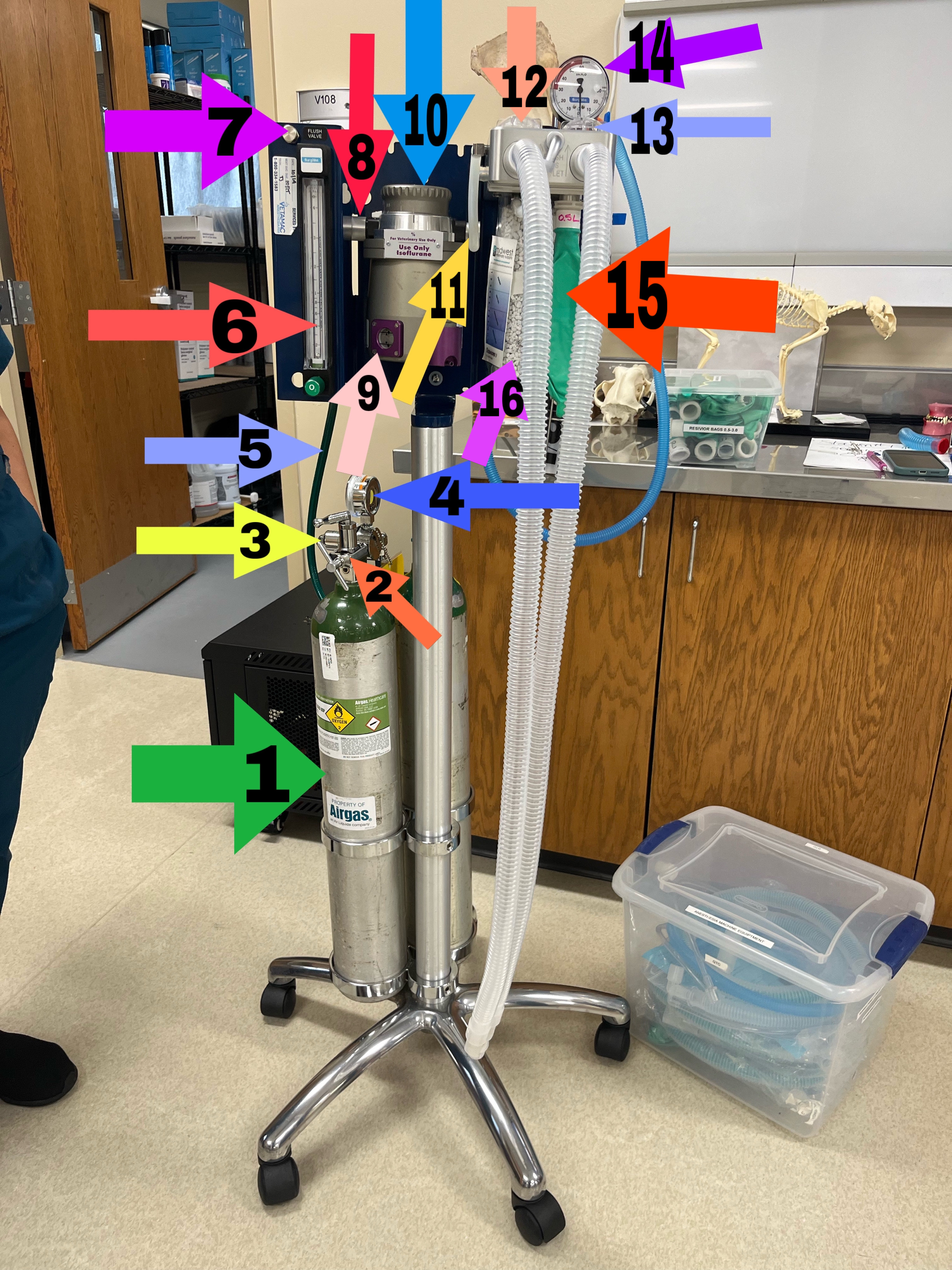
Oxygen E tank
oxygen canister
turn on using wing nut
1
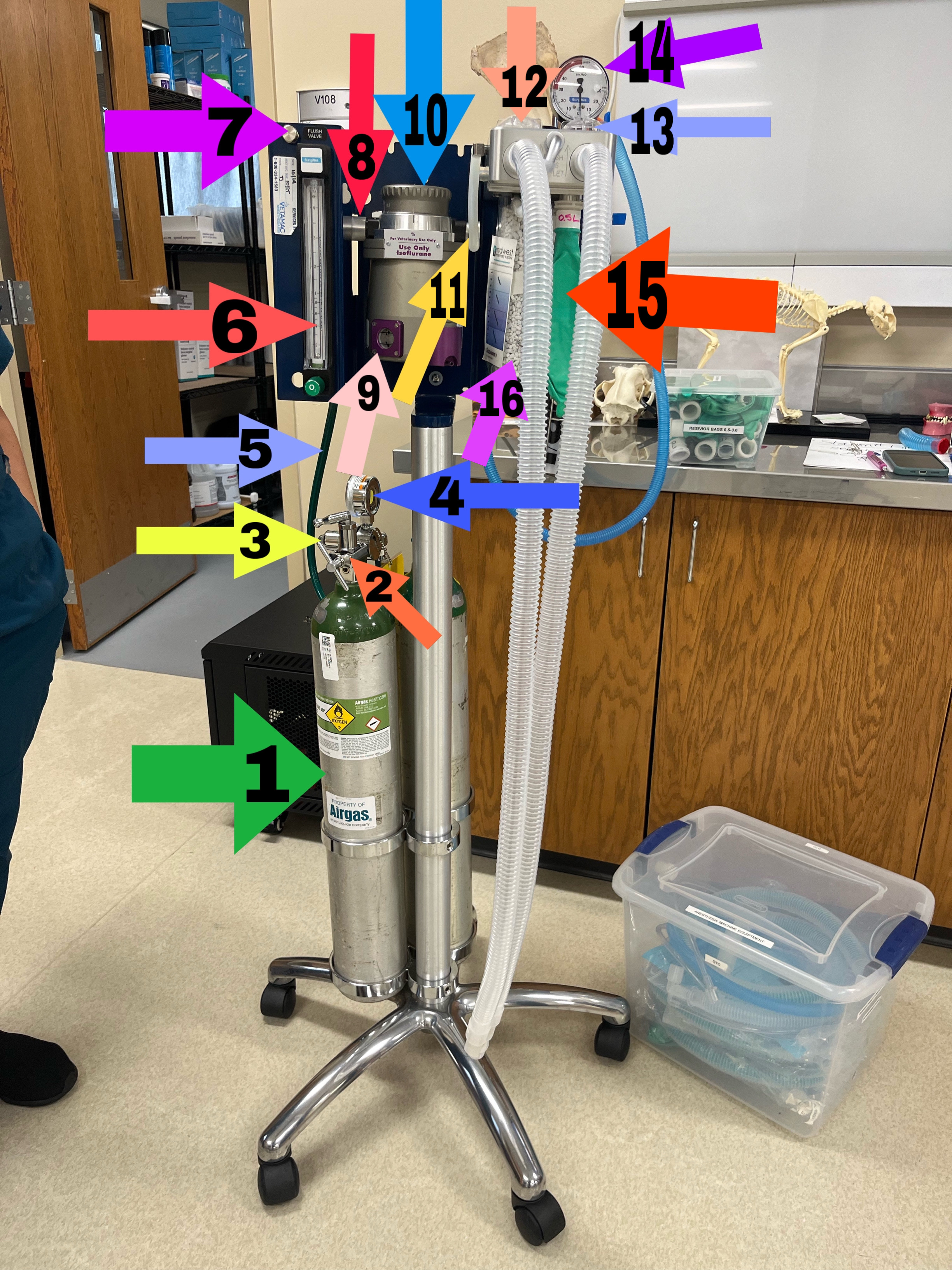
Yoke
holds oxygen tank securely in place
2

Pressure reducing valve
ensure safe working pressure
3
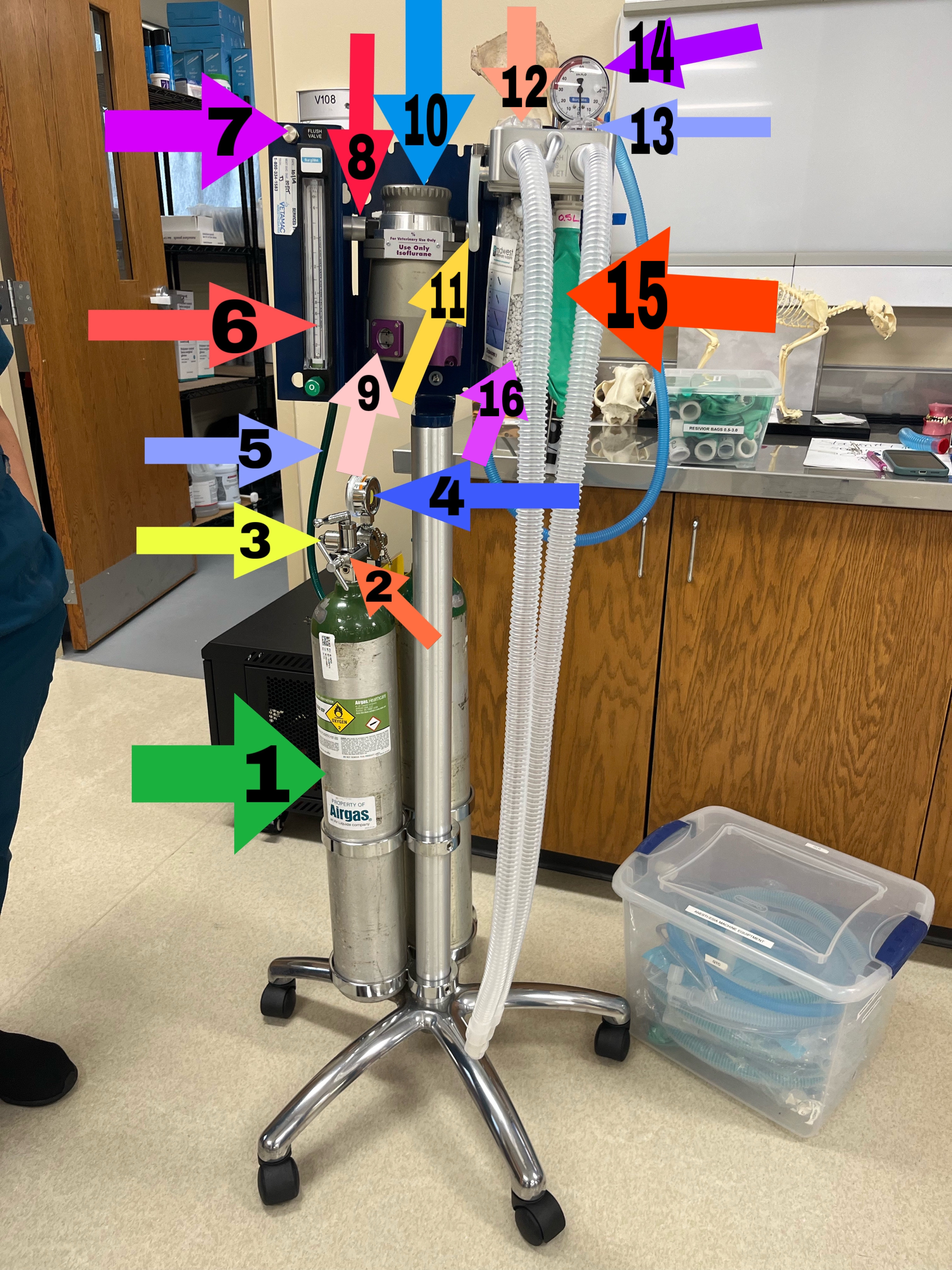
pressure gauge
500 or less of oxygen in tank is warning that it’s running out of gas
4
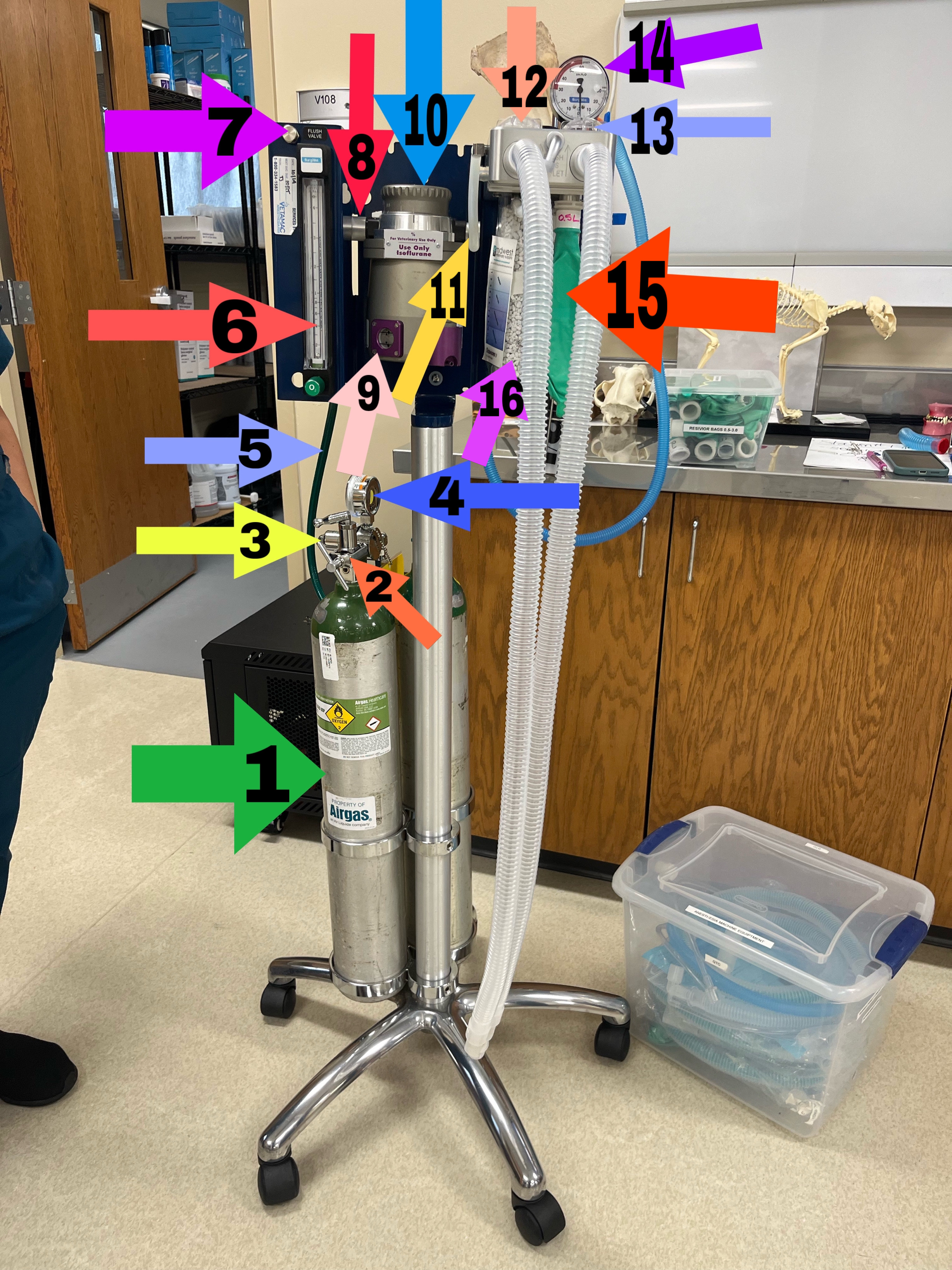
oxygen line
moves oxygen into internal system of machine
5
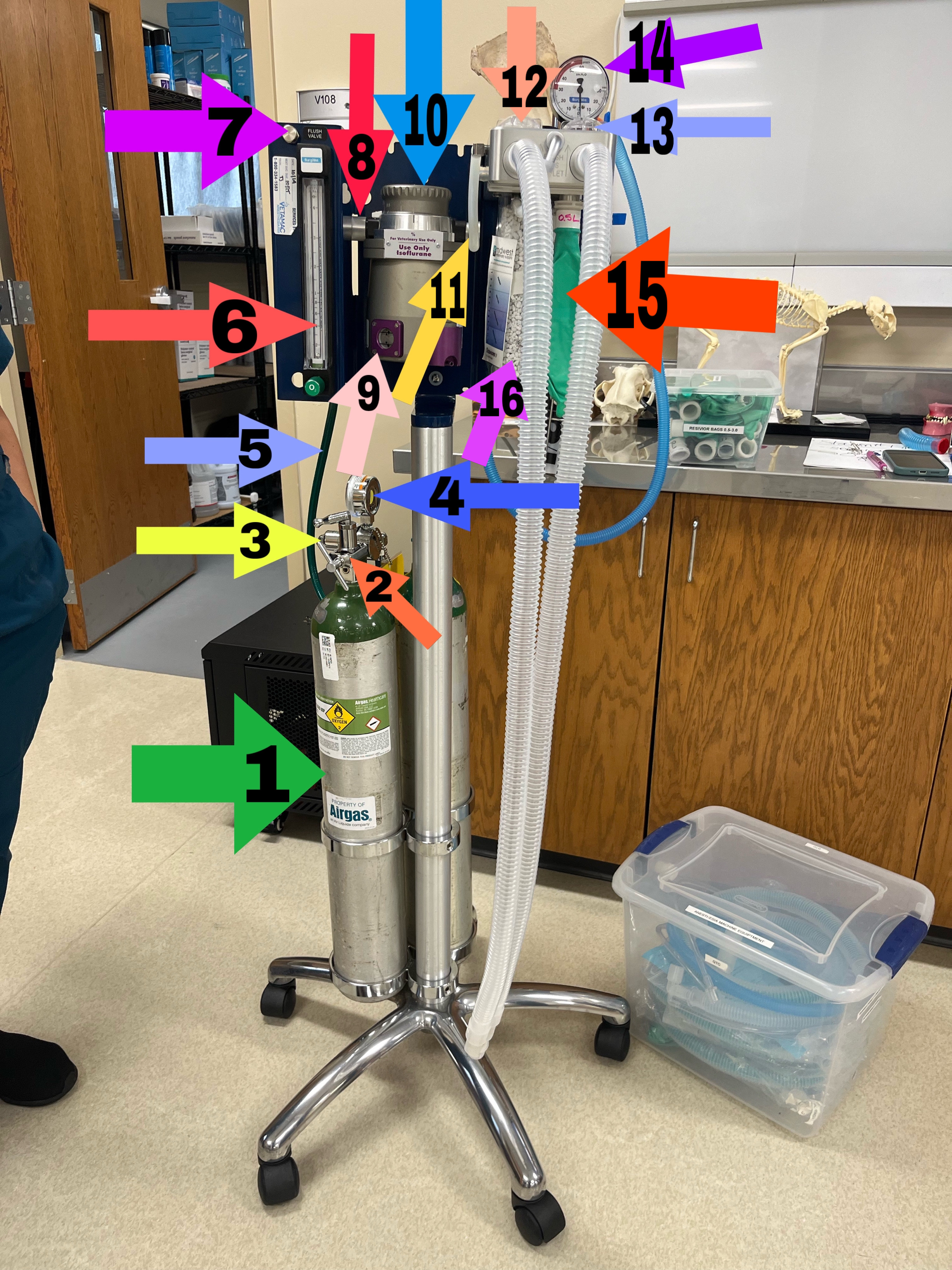
flow meter
adjusts the rate of oxygen
move dial to ensure it works properly
read in liters (L)
6
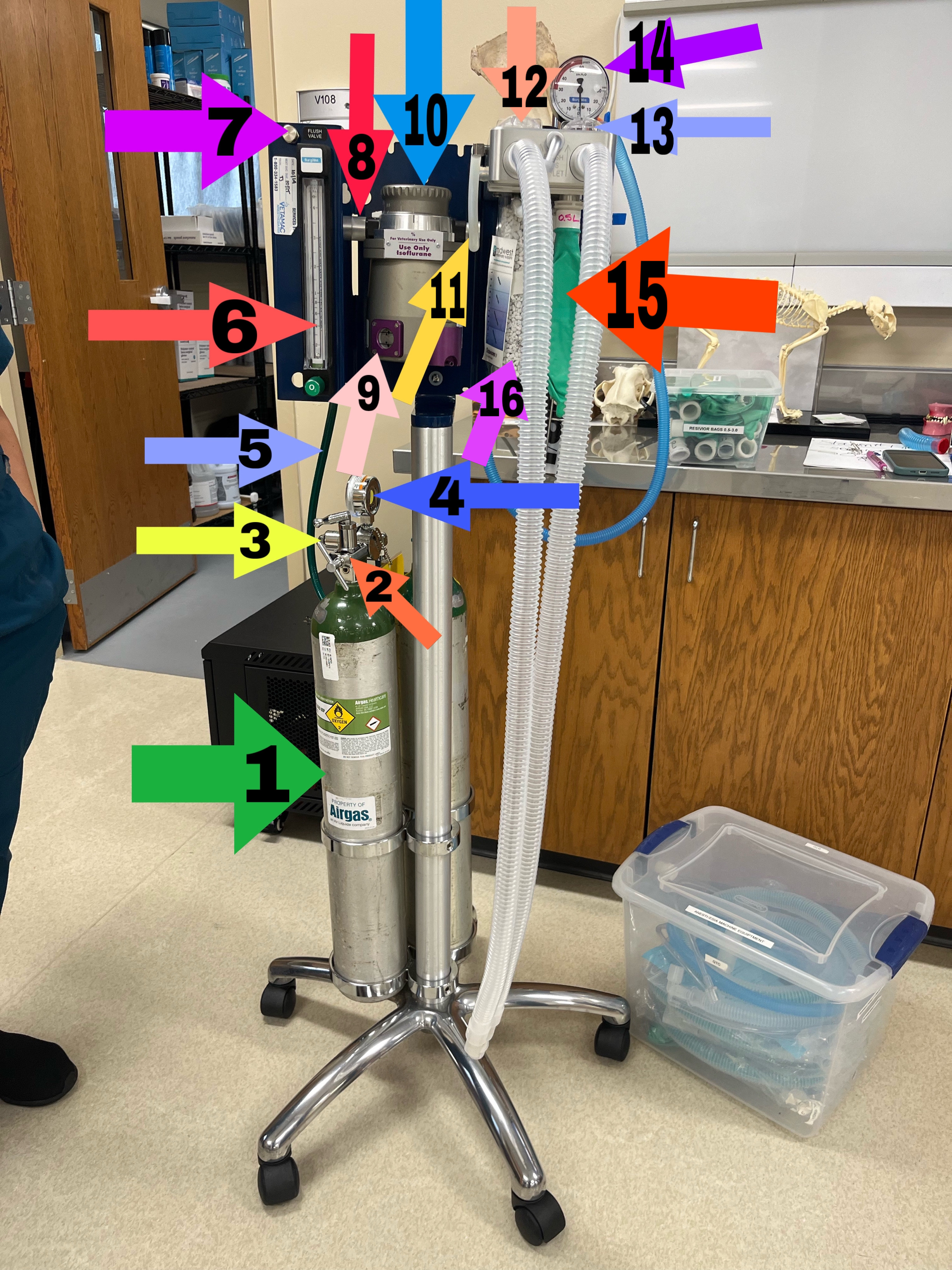
fast flush valve
delivers 100% oxygen at high flow
used only with pressure relief valve open
never used with non-rebreathing system
leak check
7
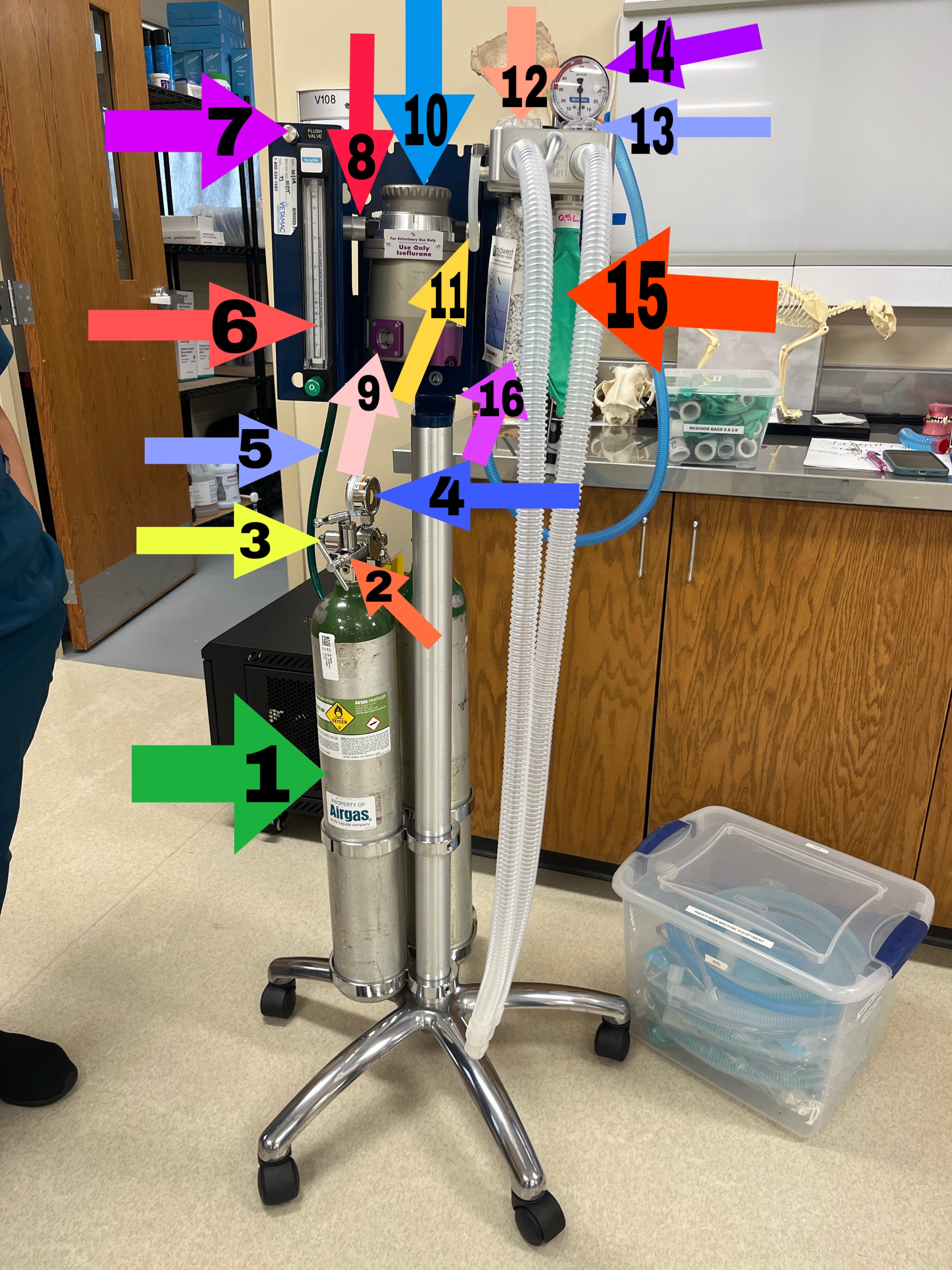
vaporizer inlet
oxygen enters the vaporizer to mix with anesthetic
8
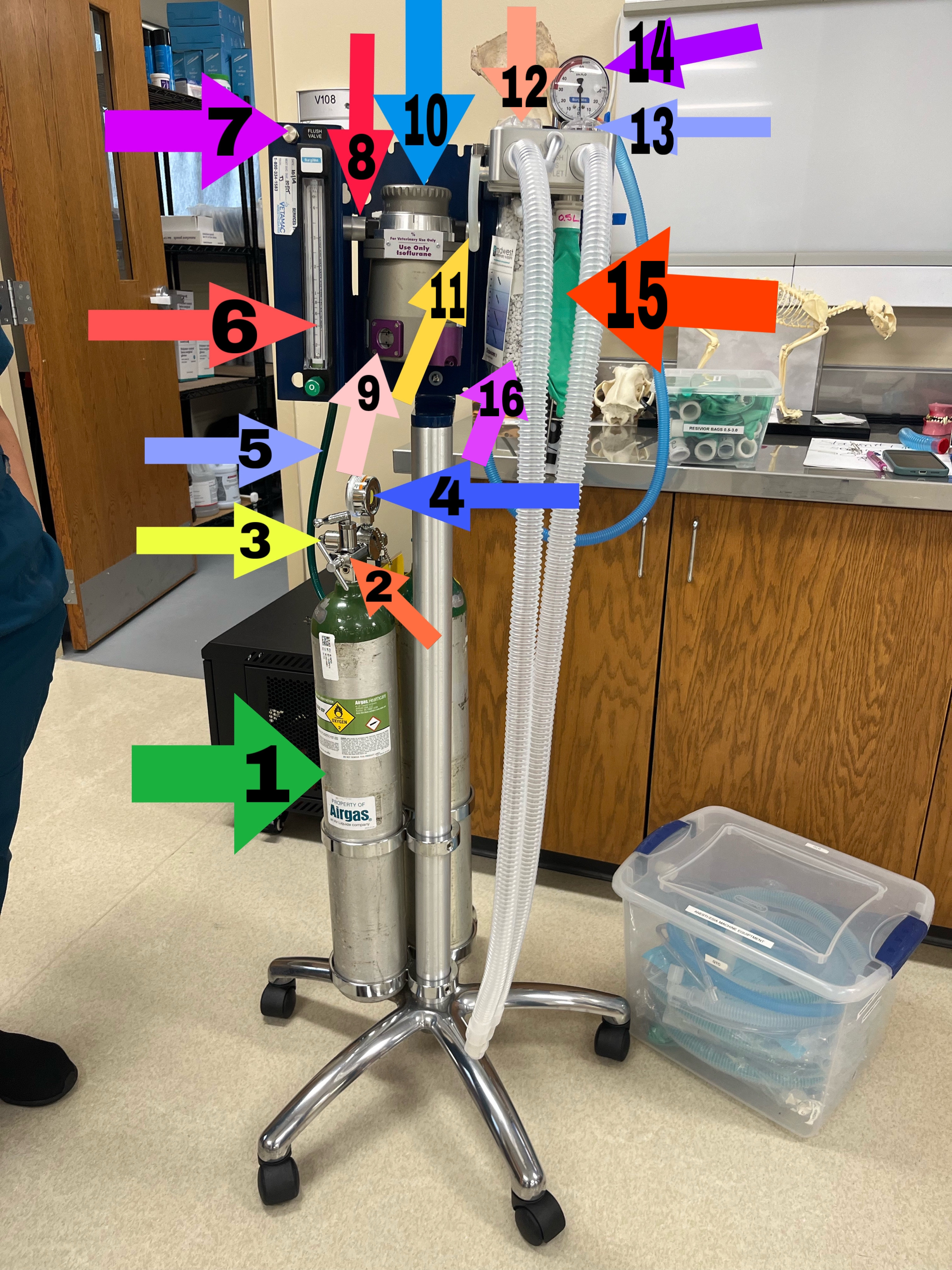
indicator window
tells how much liquid gas is in vaporizer
9
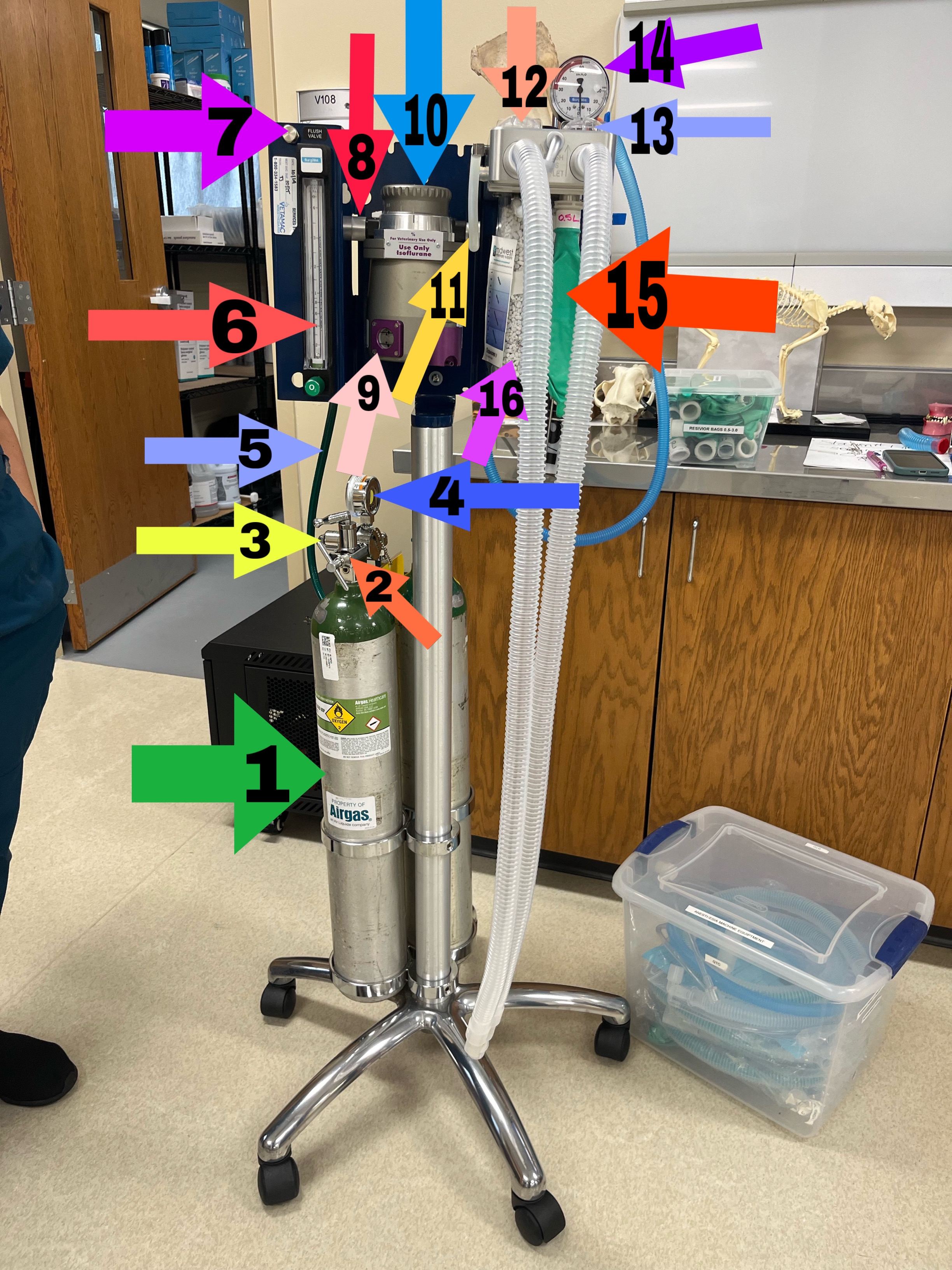
vaporizer
turns liquid anesthetic into vapor and marries with oxygen
check dial by rotating
check isoforren in gauge
10

vaporizer outlet
where oxygen/anesthetic gas mixture exits
11
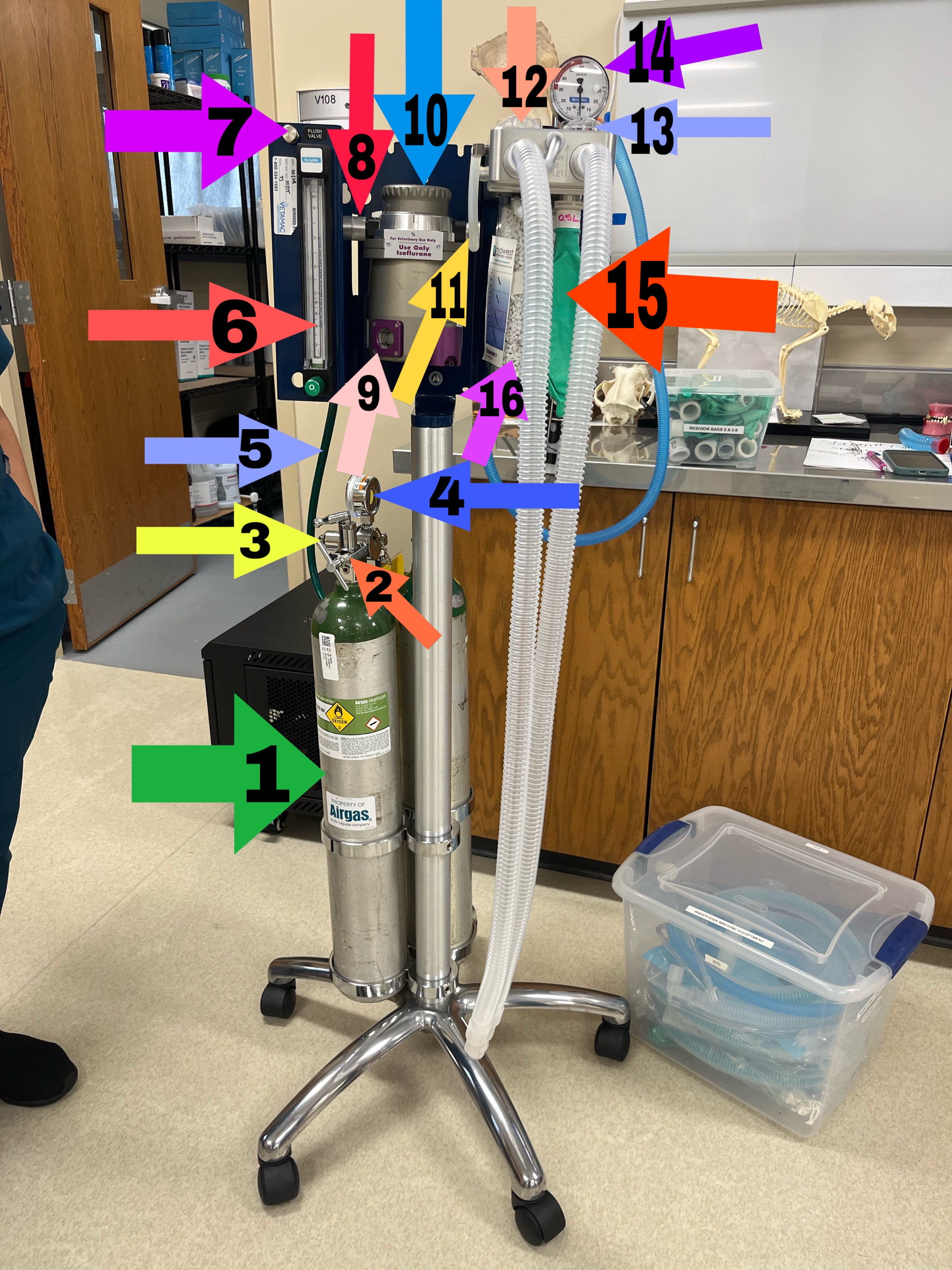
inhalation valve
allows gas to flow to patient only
prevents back flow
12
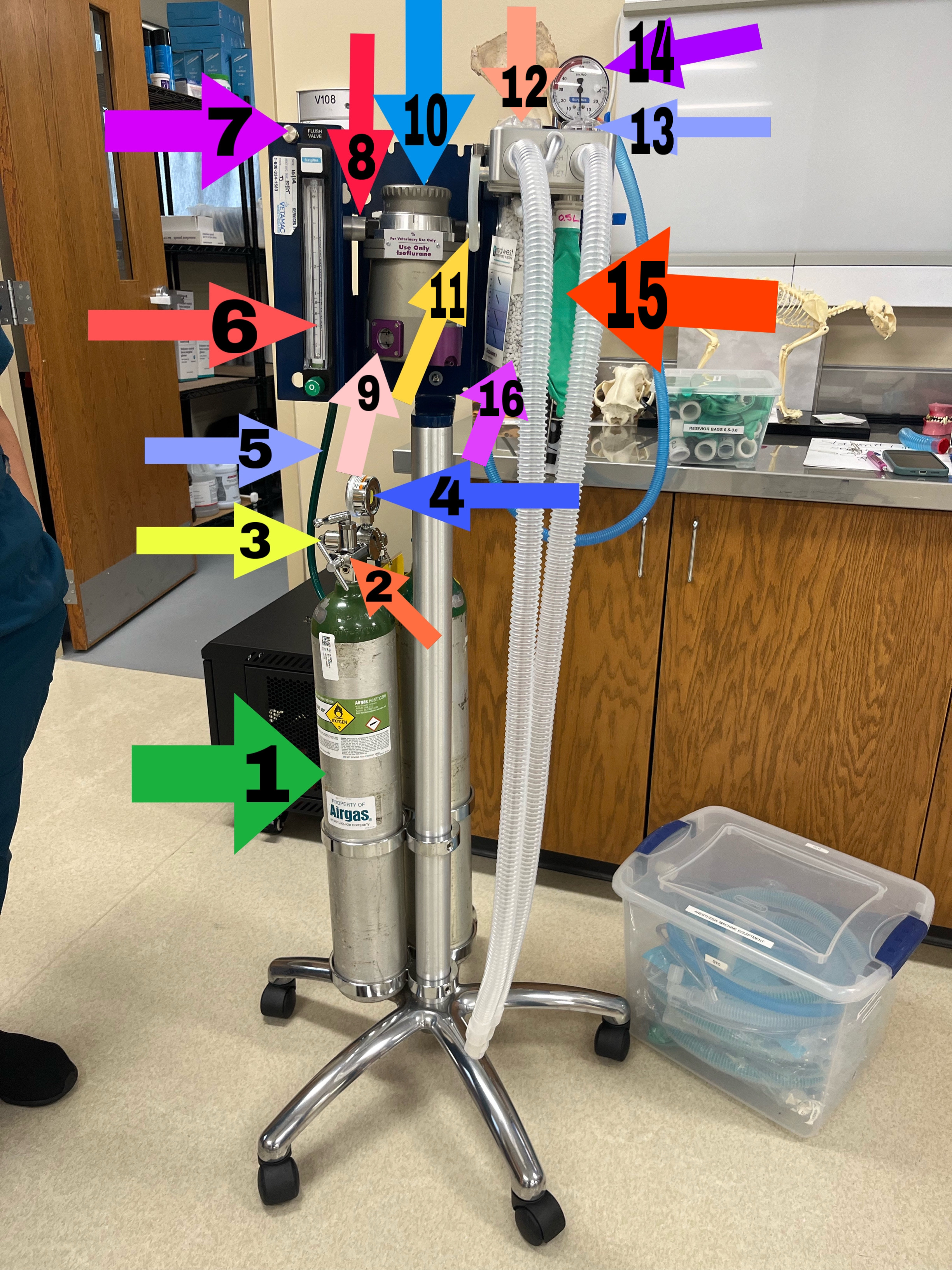
exhalation valve
guides used gas back into the system
pop off valve
13
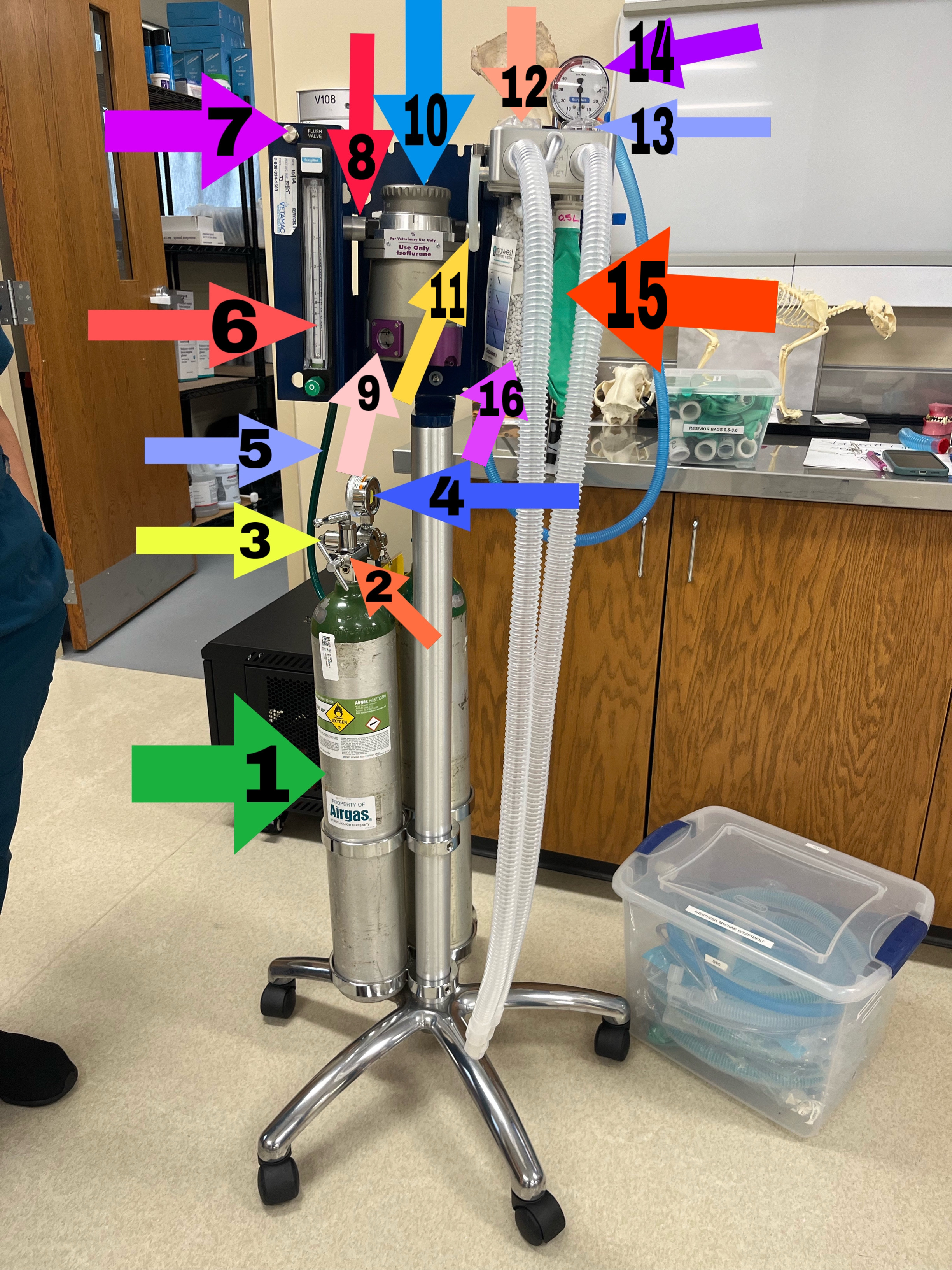
pressure manometer
amount of pressure in system
centimeters of water
shouldn’t exceed 20 PSI while patient is attached
14
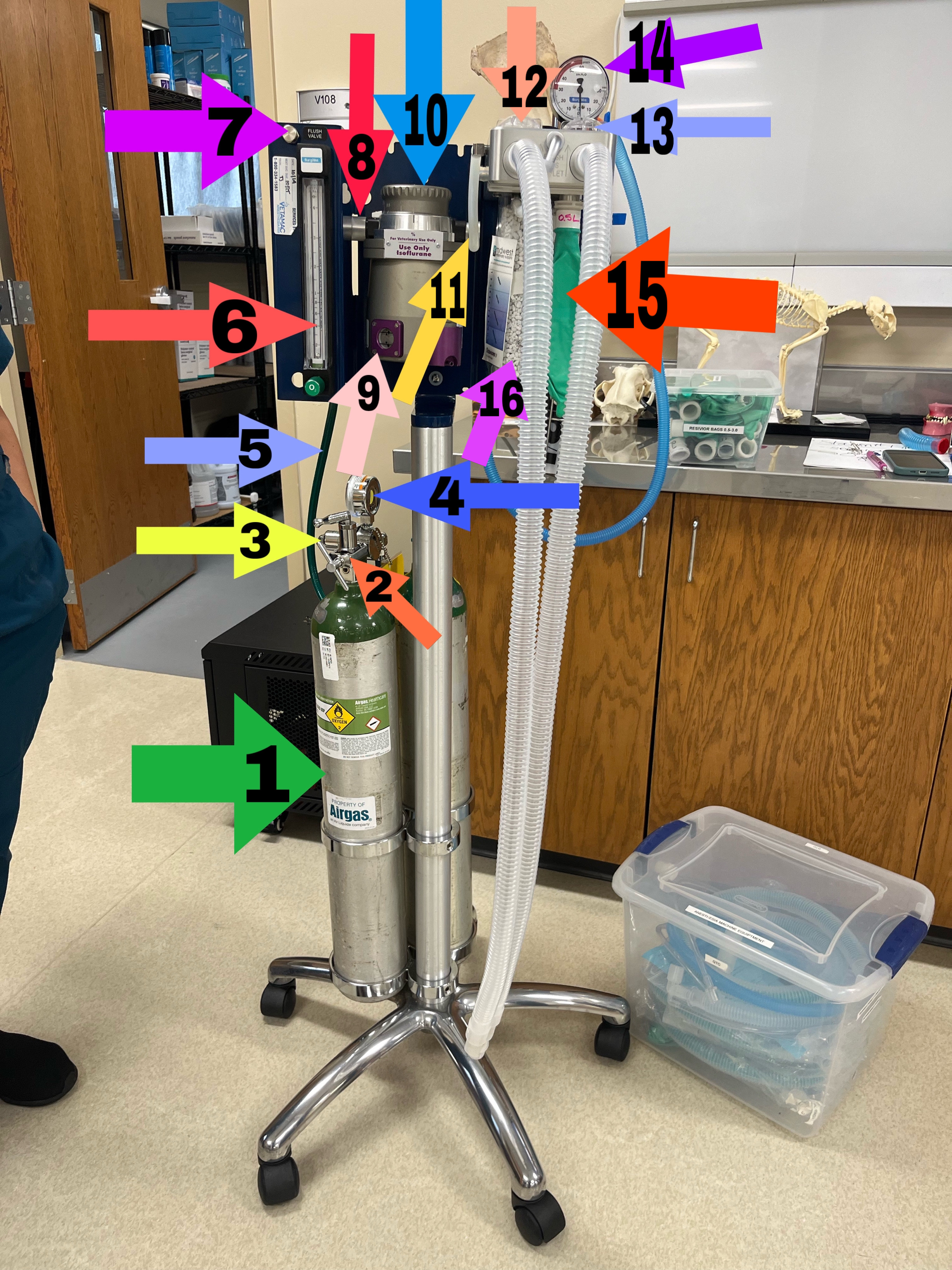
reservoir bag
collects gases for manual ventilation or monitoring breathing
rebreathing bag
15

CO2 absorber
removes CO2 from exhaled gas
soda lime crystals
replace after 6-8 hours of use
turns purple
16
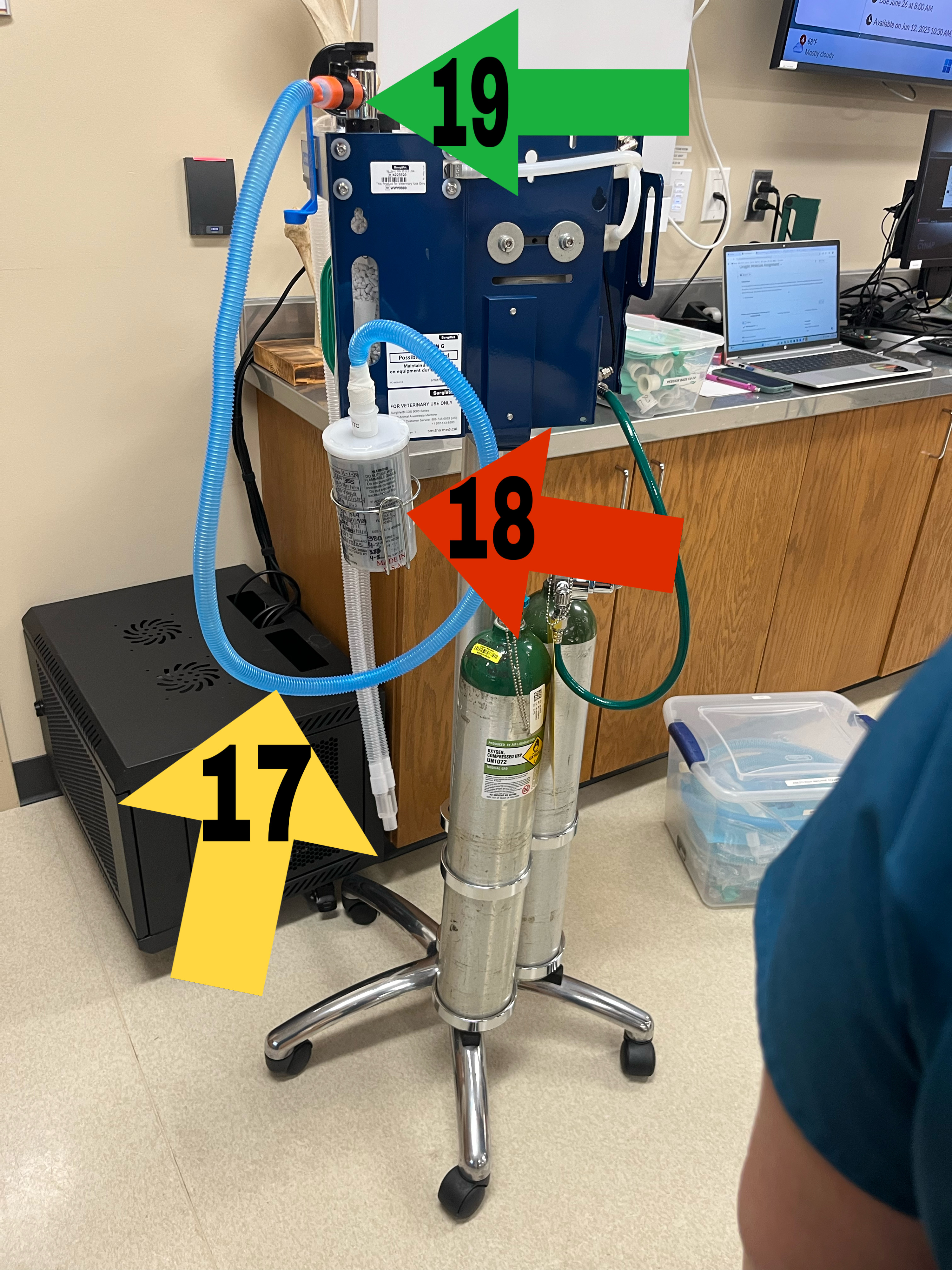
scavenging system
captures excess anesthetic gas
prevents gas from entering room
17
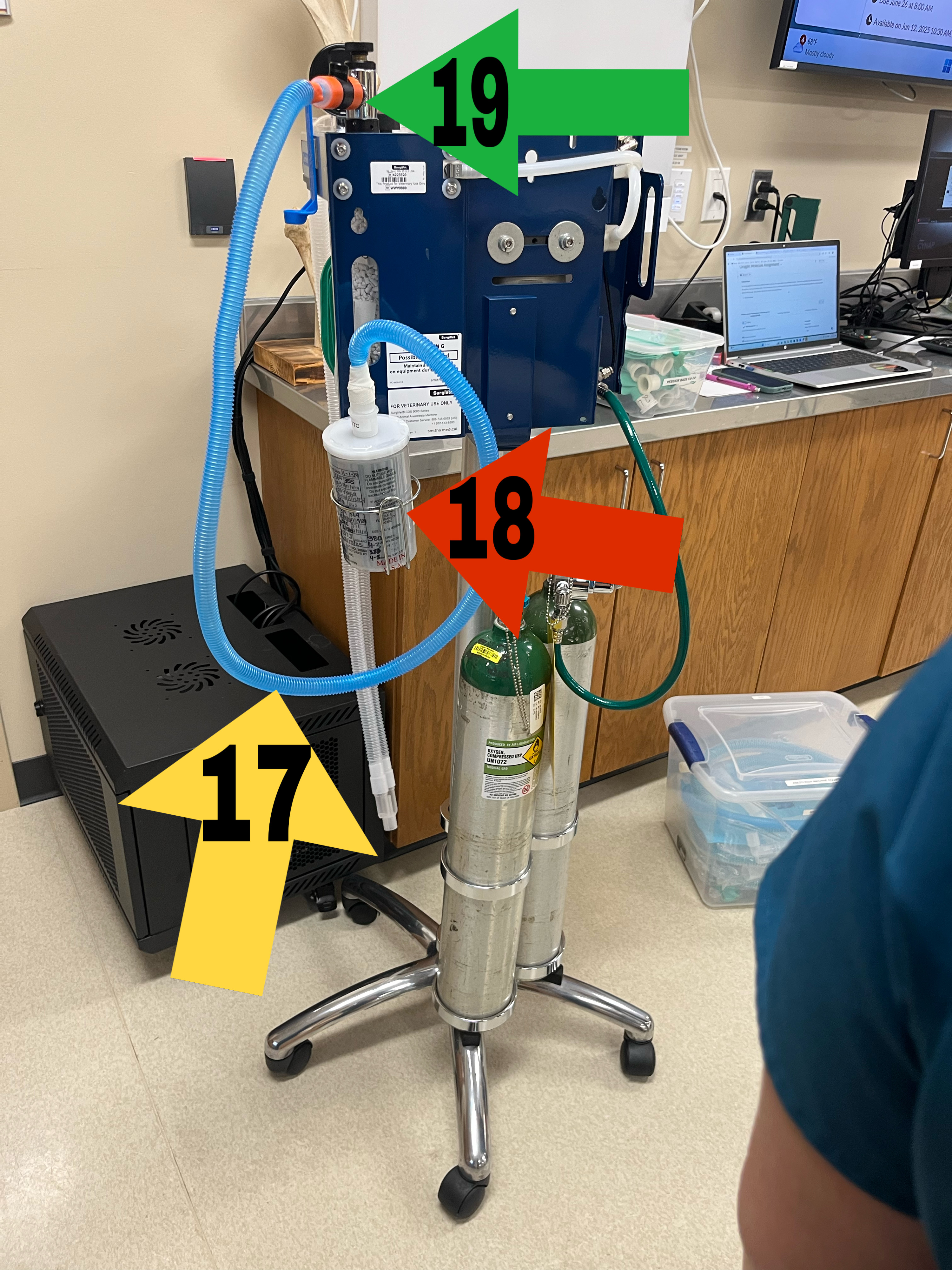
F air canister
contains activated charcoal
gravity scavenging unit
weigh for 50 grams increase from starting weight
18

pop off valve
pressure relief valve
relieves excess pressure in system
keep open!!!
19
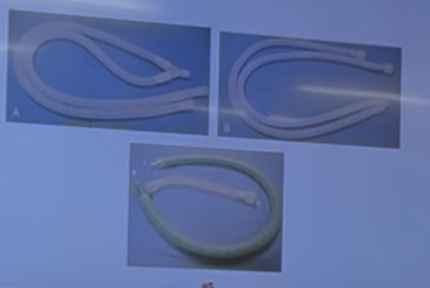
rebreathing circuits
oxygen flow rate: 20-40 mL/min/kg

non-breather circuits
oxygen flow rate: 200-400 mL/min/kg
7kg or less